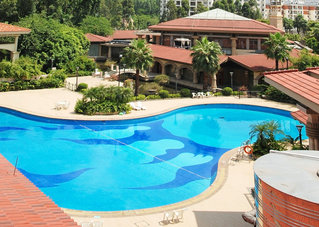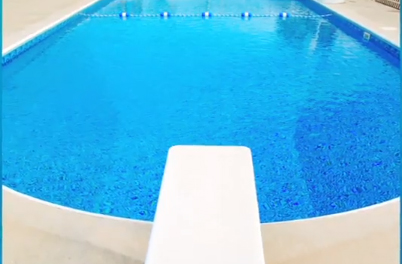Pools & Spas
I know they’ve been around for quite a while, but in our marketplace, beach entries are the latest thing these days – maybe hotter than ever before. The enthusiasm makes sense: Beach entries give bathers a way to dip into the water and take up a spot in the pool or on a lounge chair without making a full commitment to getting soaked. Better yet, we get a lot of sun in Texas, and these spaces can easily be rigged with umbrella stanchions – a cool
Of all the decisions related to swimming pool projects, the one that tends to be the most difficult for average consumers to wrap their minds around has to do with selecting the sanitizing system. And that’s with good reason, because water treatment is a complex, science-laden topic that can involve a lifetime of study. As a result, I figured that a simple, direct approach would be best in
Almost anyone who’s spent much time around swimming pools is familiar with the classic method for measuring their water volume – that is, by multiplying length by width by average depth and then multiplying that result by 7.5, which is approximately the number of gallons in a cubic foot. That’s all well and good for basic rectangular watershapes, but what do you do when the pool in question has a truly irregular shape? The answer, as we’ll discuss here, has to do with
This was a fun project in lots of ways – not the least of which involved figuring out how to fit a skimmer into the system without completely disrupting the clean look of the coping-only treatment of the pool’s perimeter. Usually, of course, pools at grade level are
Through all the years I’ve spent communicating with other pool designers and builders and in working directly for or consulting with clients, I’ve come across all sorts of design processes and decisions I’d classify as questionable (at best) or just plain wrong, foolish or even actionable (at worst). I’d originally listed them as ten common mistakes pool designers make (and should try to avoid), but a recent incident forced me to expand the list to cover
In far too many cases, lighting in and around backyard swimming pools is an afterthought – and sometimes I get the impression that there’s not much thought involved at all. As I see it, our clients deserve better than an easy, one-size-fits-all approach, and that’s the main reason I developed the brief video presentation linked below: I wanted to give homeowners a bit of information that would help them understand both the importance of good lighting and get them ready to discuss a variety of available design solutions. As I suggest in the video, the old-style, under-the-diving-board placement of a 500-watt incandescent bulb should never
I started making videos and putting them up on YouTube a couple years back to help my prospective clients (and, for that matter, anyone else who might be interested) become better informed about all of the decisions that go into purchasing backyard swimming pools. The one I’m sharing here, for example, is about a detail the average consumer rarely (if ever) considers
When I conduct seminars at pool and spa industry trade shows, I regularly get asked about the validity of a water-management technique known widely as the “acid column” approach. Those who believe in this application method say that if acid is poured into a swimming pool in a concentrated area – producing what adherents variously call a column, slug, well or cloud – the alkalinity of the water will be drastically reduced, but the pH will not drop as much as it otherwise would. By contrast, they say, if that same volume of acid is added by walking it around a pool and evenly distributing it throughout the water, the pH will be






















